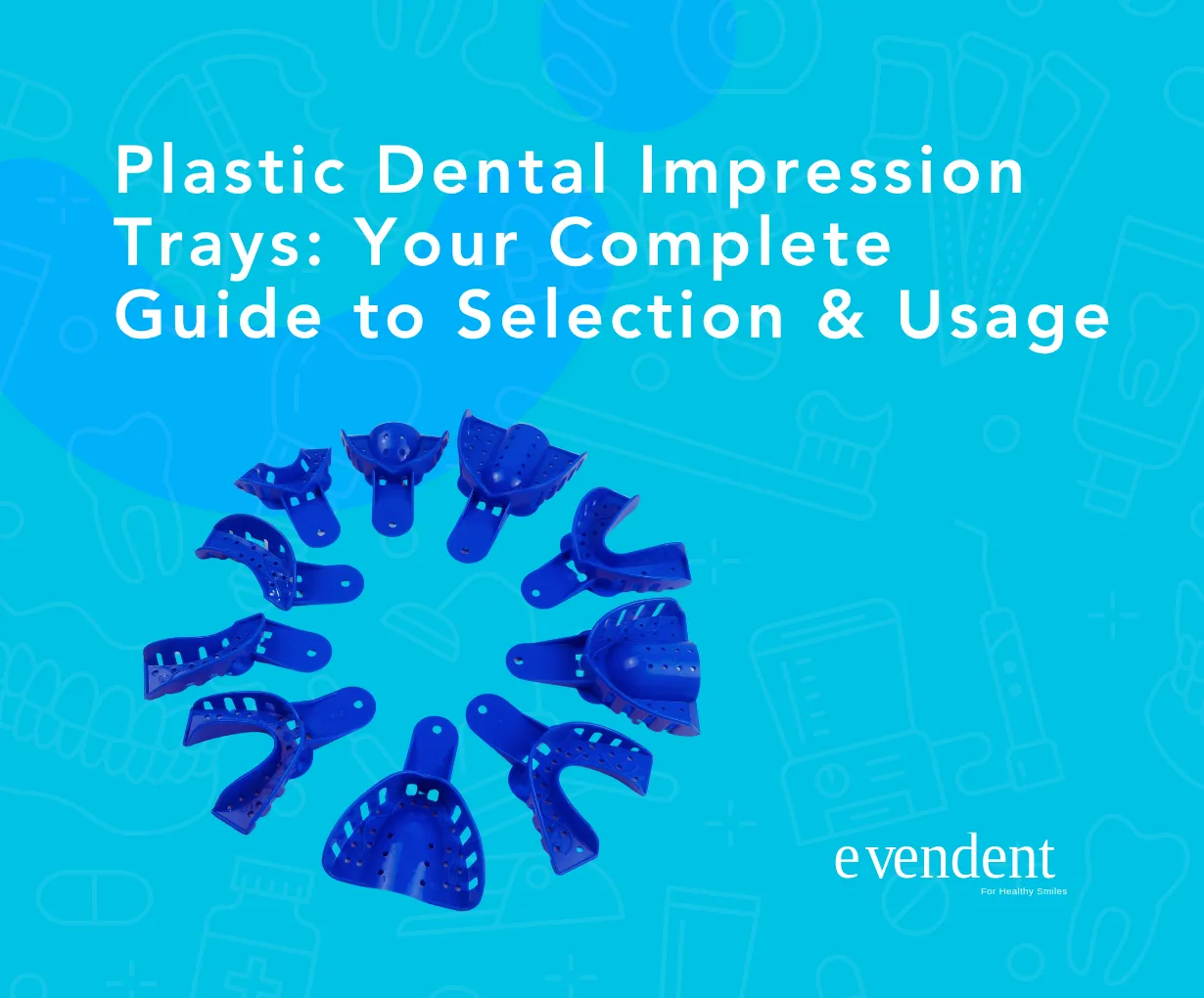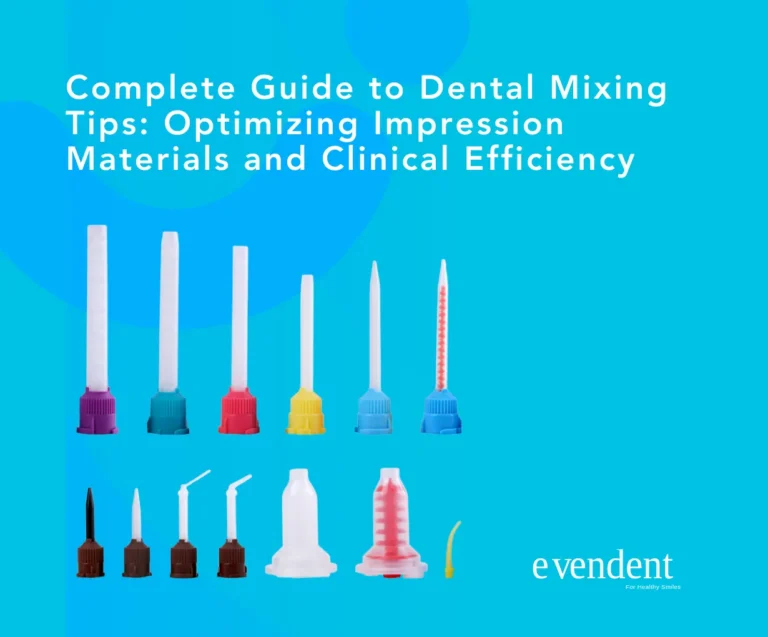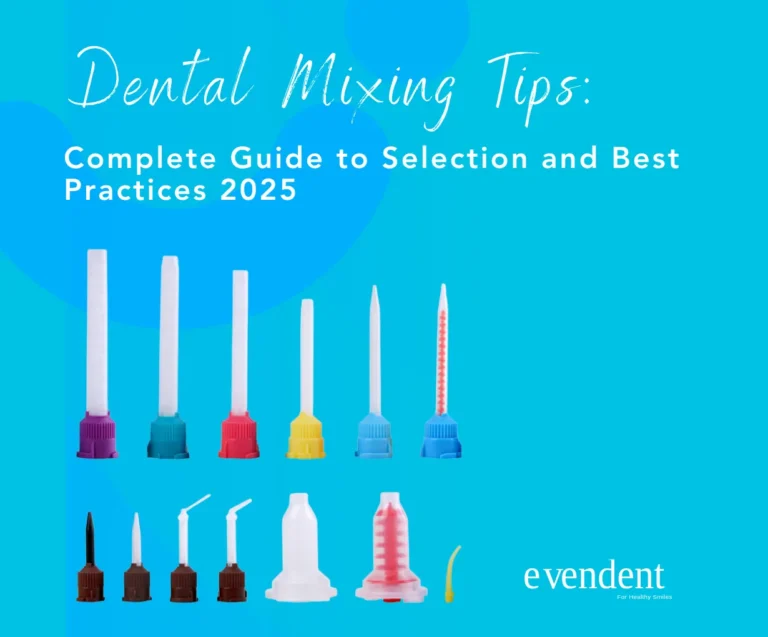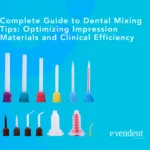Plastic Dental impression trays are crucial tools for capturing the precise anatomy of a patient’s teeth and gums, forming the foundation for accurate dental restorations and appliances. Without a well-fitting, sturdy tray, even the best impression materials cannot deliver the detailed molds needed for effective crowns, bridges, dentures, and orthodontic devices. Choosing the right tray enhances accuracy, improves patient comfort, and reduces costly retakes. This article delves into the world of plastic dental impression trays, exploring their types, benefits, selection criteria, and best practices for optimal results.
Understanding Plastic Dental Impression Trays
Dental impression trays are specialized devices that hold and support impression materials while capturing a negative imprint of the teeth and surrounding oral tissues. These trays provide a stable base, allowing dental professionals to create detailed, three-dimensional molds. Plastic dental impression trays are a common choice in dentistry due to their disposable nature, which helps minimize cross-contamination and ensures hygiene.
Types of Plastic Dental Impression Trays
Plastic impression trays come in various designs to accommodate different clinical needs and anatomical variations. Key classifications include:
- Full-Arch Trays: These trays are designed to capture an impression of the entire upper or lower dental arch, ideal for dentures, night guards, or orthodontics.
- Quadrant Trays: Covering approximately one-quarter of the mouth, quadrant trays are suitable for partial restorations like crowns or inlays.
- Sectional Trays: Smaller than quadrant trays, sectional trays are used for specific areas, such as anterior teeth.
- Perforated vs. Non-Perforated Trays: Perforated trays feature small holes that allow impression material to flow through and lock into place, providing mechanical retention. Non-perforated trays, on the other hand, rely on adhesives to secure the material.
- Edentulous Trays: These shallow, smooth-edged trays are specifically designed for patients without teeth, capturing detailed impressions of soft tissues and ridges.
- Dual-Arch/Triple Trays: Often made from plastic, these trays capture impressions of both upper and lower arches simultaneously, along with the occlusal relationship of the opposing dentition. While convenient, plastic dual-arch trays may be more flexible than metal ones.

Key Benefits of Choosing Plastic Impression Trays
Plastic dental impression trays offer several advantages for dental professionals and patients:
- Hygiene and Cross-Contamination Control: Being single-use and disposable, plastic trays eliminate the risk of cross-contamination between patients, enhancing safety protocols in the clinic. This also saves time on cleaning, disinfecting, and sterilizing reusable trays.
- Cost-Effectiveness: Disposable plastic trays can be a cost-effective solution, particularly by reducing the labor and resources associated with reprocessing reusable instruments.
- Lightweight and Patient Comfort: Plastic trays are generally lightweight, contributing to better patient comfort during the impression-taking process.
- Versatility: Available in a wide range of sizes and shapes (e.g., XS to XL), plastic trays can accommodate various arch forms and clinical needs, including pediatric patients. Some clear plastic trays can even be modified with heat to better fit specific anatomical challenges like wide arches or rotated teeth.
- Compatibility: Many plastic trays are compatible with a wide variety of impression materials.
Selecting the Right Plastic Dental Impression Tray
Choosing the appropriate impression tray is paramount for achieving accurate and reliable impressions. Three key factors to consider are size, shape, and material rigidity.
1. Size
Correct sizing is crucial to ensure the tray covers all necessary dental structures and allows adequate space for the impression material. Impression tray sizes range from XX-Small to XX-Large, with smaller sizes often suited for children and females, and larger sizes for adult males.
- Fit Test: When testing a tray, ensure it covers all dental pieces, including the most posterior teeth, and allows a slight gap for the impression material to fill.
2. Shape
Tray shapes vary to correspond with different parts of the mouth: full-arch, quadrant, or specific sections like the anterior. Selecting the shape that best aligns with the anatomical area to be captured is essential for a complete impression.
3. Material Rigidity and Perforation
While plastic trays offer flexibility, it’s important to choose trays that maintain rigidity during the impression process to prevent distortion. Flexible trays, especially with two-stage putty/wash techniques, can deform and lead to inaccurate castings. Look for trays described as “rigid” or “distortion-free.” Perforated designs enhance material retention, preventing detachment of the impression.
Best Practices for Using Plastic Impression Trays
- Material Compatibility: Ensure the chosen impression material is compatible with the plastic tray. Alginate is commonly used with plastic trays for preliminary impressions.
- Adhesive Application: For non-perforated trays, or to enhance retention in perforated trays, always apply a bonding agent or tray adhesive to the interior surface before loading the impression material. This prevents the impression from detaching and reduces distortion.
- Proper Loading: Load the impression material evenly into the tray, ensuring no air bubbles are trapped.
- Seating Technique: Seat the tray firmly and evenly over the arch. For two-step impressions, ensure proper seating of the putty layer before adding the light-bodied wash.
- Patient Positioning: Proper patient positioning and instructions (e.g., staying still, avoiding jaw movement) are critical for precise impressions.
Cleaning and Sterilization of Plastic Trays
While many plastic trays are disposable, some rigid plastic trays are designed for reuse and can be cleaned and sterilized. For reusable plastic trays, proper reprocessing is vital to maintain hygiene and longevity.
- Immediate Pre-Cleaning: Immediately after use, remove excess impression material and rinse the tray thoroughly under running water to prevent debris from hardening. Use a soft brush to remove visible contamination.
- Disinfection: Immerse the disassembled tray in an approved, neutral medical-grade disinfectant solution, following the manufacturer’s instructions for dilution and immersion time. Avoid disinfectants with chlorine, ammonia, phenol, or aldehydes that may damage plastic.
- Rinsing and Drying: After disinfection, rinse all parts thoroughly with water multiple times. Dry completely with lint-free cloths or oil-free compressed air to prevent microbial growth and ensure effective sterilization.
- Sterilization: For reusable plastic trays made of high-impact plastic materials suitable for autoclaving, follow manufacturer guidelines for temperature, pressure, and time (e.g., 121°C at 1 ATM for 30 minutes, or 134°C at 2 ATM for 20 minutes, with a drying time). Plastic trays can generally withstand a high number of sterilization cycles. Ensure the tray is packed in a steam sterilizable wrap or container to maintain sterility.
Common Errors and How to Avoid Them
- Distortion: Using overly flexible plastic trays can lead to dimensional distortion, especially with two-stage impression techniques or excessive pressure. Opt for rigid plastic trays and avoid excessive pressure during seating.
- Incomplete Impressions: This often results from incorrect tray size, insufficient material, or improper seating. Always select a tray that provides adequate coverage and space around all teeth.
- Air Bubbles/Voids: Ensure proper mixing and loading of impression material into the tray, burying the mixing tip to prevent air entrapment.
- Material Detachment: If the impression material detaches from the tray, it indicates insufficient retention. Always use tray adhesive for non-perforated trays and consider perforated trays for better mechanical retention.
By understanding the various types, benefits, and proper usage techniques, dental professionals can leverage plastic dental impression trays to achieve consistent, high-quality impressions, leading to successful and precise patient outcomes.
Looking for Professional Dental Material Solutions?
🔬 Technical Consultation: Get expert guidance and product selection advice
📦 Sample Request: Receive free product samples for testing
💰 Quotation Service: Get the best pricing for bulk purchases
Contact Information
📞 Phone/WhatsApp: +86 180 1638 1172
🌐 Website: evendent.com
📧 Email: shevendent@gmail.com






